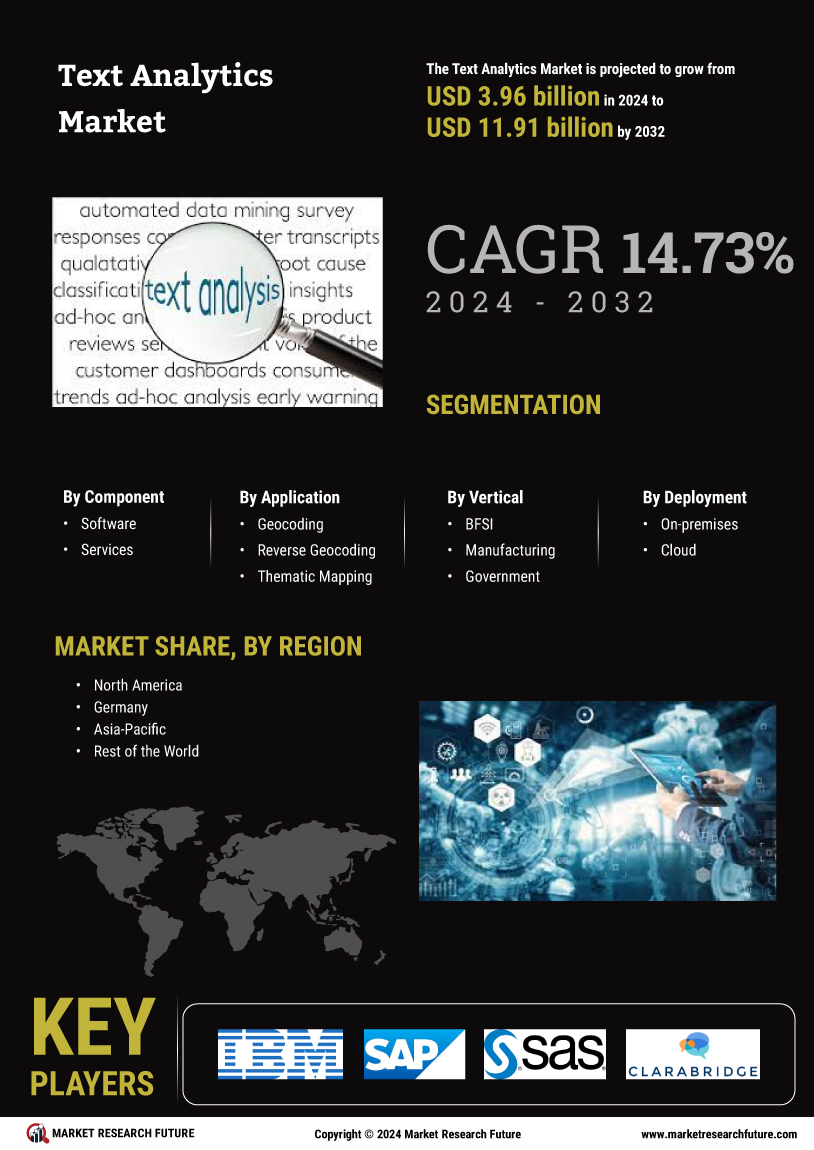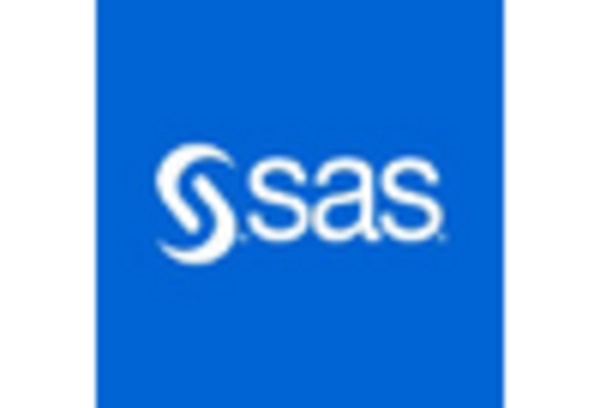The Text Analytics Market is currently characterized by a dynamic competitive landscape, driven by the increasing demand for data-driven insights across various sectors. Key players such as IBM (US), Microsoft (US), and Google (US) are at the forefront, leveraging advanced technologies to enhance their offerings. IBM (US) focuses on integrating artificial intelligence into its analytics solutions, thereby enabling businesses to derive actionable insights from unstructured data. Meanwhile, Microsoft (US) emphasizes cloud-based solutions, facilitating seamless access to analytics tools for organizations worldwide. Google (US) continues to innovate with its natural language processing capabilities, enhancing user experience and engagement through sophisticated text analytics applications. Collectively, these strategies not only bolster their market positions but also intensify competition, as companies strive to differentiate themselves through technological advancements and customer-centric solutions.
In terms of business tactics, companies are increasingly localizing their operations to better serve regional markets, optimizing supply chains to enhance efficiency. The Text Analytics Market appears moderately fragmented, with a mix of established players and emerging startups. This structure allows for a diverse range of solutions, catering to various industry needs. The collective influence of key players shapes market dynamics, as they engage in strategic partnerships and collaborations to expand their reach and capabilities.
In August 2025, IBM (US) announced a partnership with a leading healthcare provider to develop a text analytics platform aimed at improving patient outcomes through data-driven insights. This collaboration underscores IBM's commitment to leveraging its AI capabilities in the healthcare sector, potentially transforming how patient data is analyzed and utilized. The strategic importance of this move lies in its potential to enhance IBM's market share in the healthcare analytics domain, aligning with the growing trend of personalized medicine.
In September 2025, Microsoft (US) launched an upgraded version of its Azure Text Analytics service, incorporating advanced machine learning algorithms to improve sentiment analysis accuracy. This enhancement is particularly significant as it positions Microsoft to better compete against rivals by offering more precise and actionable insights. The upgrade reflects a broader trend towards integrating AI into analytics solutions, which is likely to become a standard expectation among users.
In October 2025, Google (US) unveiled a new suite of text analytics tools designed specifically for e-commerce businesses, enabling them to analyze customer feedback and optimize product offerings. This strategic initiative highlights Google's focus on niche markets, allowing it to capture a larger share of the e-commerce sector. The introduction of these tools may not only enhance customer engagement but also drive sales through improved product alignment with consumer preferences.
As of October 2025, the Text Analytics Market is witnessing trends such as digitalization, sustainability, and the integration of artificial intelligence, which are reshaping competitive dynamics. Strategic alliances are becoming increasingly vital, as companies recognize the need to collaborate to enhance their technological capabilities and market reach. Looking ahead, competitive differentiation is likely to evolve from traditional price-based competition to a focus on innovation, technology, and supply chain reliability, as organizations seek to provide unique value propositions in an ever-evolving landscape.

















Leave a Comment